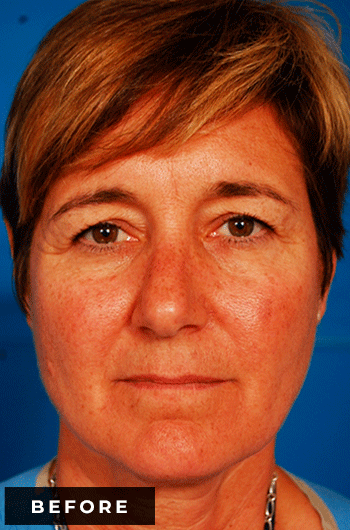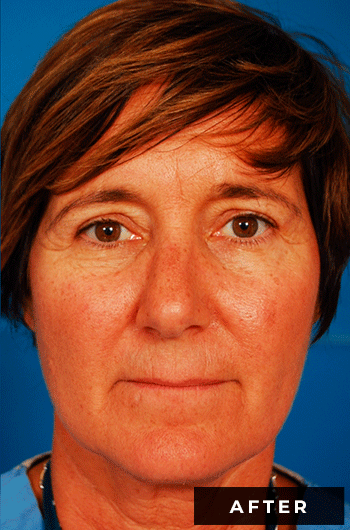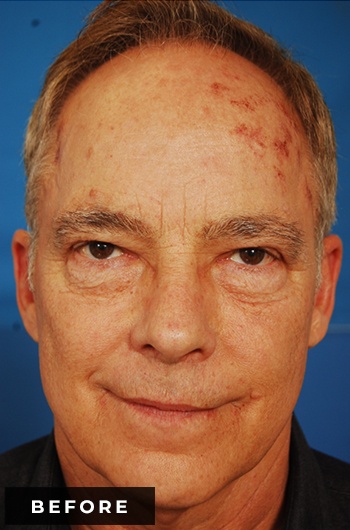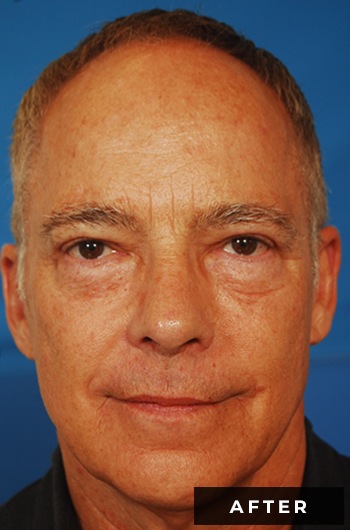3800 Reservoir Rd, 1st Floor Gorman
Washington, DC 20007
6862 Elm St, Suite 800B
McLean, VA 22101
Upper blepharoplasty (BLEF-a-roe-plasty) is surgery to enhance the appearance of the upper eyelids and/or to help with blocked upper vision from drooping eyelids.
Clinical evaluation begins with the assessment of your specific eyelid anatomy and your desires for improvement. Dr Reilly will then work with you to create a plan that aligns your goals with potential surgical treatments based on your anatomy.
Generally, this type of surgery is done to remove excess skin of the upper eyelids to promote a more youthful and well-rested look.
The technique for removing excess upper eyelid skin involves an incision in the natural crease of the upper eyelid. In some patients, there is also bulging fat in the upper eyelids that can be removed through this same incision.
Most patients take one week off work, followed by another week of reduced activity. There will be bruising and swelling for 7-10 days. After 2 weeks, you may resume full activity.
An upper blepharoplasty, or upper eyelid lift, is when a head and neck surgeon removes excess skin from the lid above your eyes. This procedure can be performed for cosmetic purposes, to help augment hooded or heavy upper lids, or for medical purposes if your eyelids droop into your line of vision. An upper eyelid lift promotes a more youthful and well-rested look, and can improve your obstructed vision.
Upper eyelid blepharoplasty surgery can be performed in the operating room under general sedation or in the clinic with local anesthetic. An incision is made in the crease of your upper eyelid to hide any scarring in your natural anatomy. The excess eyelid skin is excised, and the incision is closed. If you have bulging fat in your upper eyelids, Dr. Reilly can remove the eyelid fat from the same excision.
We recommend taking a full week off of work or school to adequately rest and recuperate from your upper eyelid surgery. We will see you in the clinic one week after your surgery to ensure everything is healing properly and to remove any sutures. Depending on your occupation, you may be feeling up to returning to work after that first week. You should expect to be taking it easy for the first two weeks after surgery; we recommend no heavy lifting or strenuous exercise for a full two weeks. Avoid any rigorous exercise or contact sports for six full weeks after this eyelid procedure.
Typically, procedures that are cosmetic in nature are considered “elective” by insurance companies. After your consultation with Dr. Reilly, you will be provided a personalized quote based on the scope of work discussed in your visit. Often, patients see less out-of-pocket costs for procedures performed in a lower cost setting, such as our clinic. Any component of the surgery aimed at improving the function of your eyes and vision may be partly or entirely reimbursable by your medical insurance. We have a team who will help navigate you through the scheduling process and submission for insurance authorization to help you determine what your anticipated out of pocket costs may be. If prior authorization is not required for your procedure, we may submit predetermination to your insurance company on your behalf; this process is to ask your insurance company to review your medical records and determine coverage before the procedure takes place.




Background
Upper blepharoplasty (BLEF-a-roe-plasty) is surgery of the eyelids where excess skin (and occasionally fat) in the upper eyelid area are removed to make the eyes look refreshed. Recovery time is approximately one week. In the upper lid, excess skin can be found to be “hanging” on to the eyelid and/or lashes. There is a natural crease in the upper eyelid approximately 1 cm above the upper eyelash line, which is typically used to hide the incision placement.
Eyelid evaluation
Dr. Reilly will perform an in-depth analysis of your eyelids in an open and closed position, as well as with your eyes looking up, straight ahead, and down. The examination also includes an assessment of the quality, redundancy, and strength of the eyelid skin and connective tissue.
If you and Dr. Reilly determine that you are a candidate for surgery, you will also need to undergo a comprehensive eye examination by your optometrist or ophthalmologist to determine whether there are any underlying issues with your eyes that could be exacerbated by surgery. The comprehensive eye exam will include:
In the vast majority of patients, the desired aesthetic result is readily achieved. However, the possible complications of blepharoplasty surgery include but are not limited to the following: Infection, bleeding, swelling, scarring, numbness, skin discoloration, asymmetry, change in eyelid position, dryness, displeasure with the cosmetic outcome, and allergic or other negative reactions to one or more of the medications or substances used in the operation. In rare cases, compromise in vision has been reported.
For upper eyelid surgery, an incision is made in the natural crease of your upper eyelid, which is typically 8-10 mm above your eyelashes. In order to correct issues with redundant skin, an ellipse of skin is typically taken from this area and the edges are sutures back together with a thin, absorbable suture. For any bulging fullness above the eye, redundant fat can be directly removed through the same incision.
You will come into the office for a post-operative check-up and removal of any sutures that you may have.
No alcohol for the first 7 days after surgery, which can increase bruising and swelling.
Your swelling and bruising will gradually fade over this time period.
Makeup and contact lenses can be used 10 days post-operatively. Foundations and mascara should be new to prevent introduction of bacteria.
You will come in for another post-operative check-up 4-6 weeks after surgery.
You may apply makeup to conceal bruising, but be sure to avoid anywhere near the incision lines for at least 10 days after surgery.
Rest and good nutrition are important healing factors, especially during the first 6 weeks.
Tearing, itching, burning, tightness, puffiness, and bumpy, irregular incision lines are normal during the healing process. Complete healing takes 6-12 months.
Message Sent!

Dr. Michael Reilly is double board-certified by the American Board of Otolaryngology--Head & Neck Surgery and The American Board of Facial Plastic & Reconstructive Surgery. He specializes in facial plastic surgery and Rhinoplasty.
Follow up appointments:
Medical emergency:
Clinical questions: